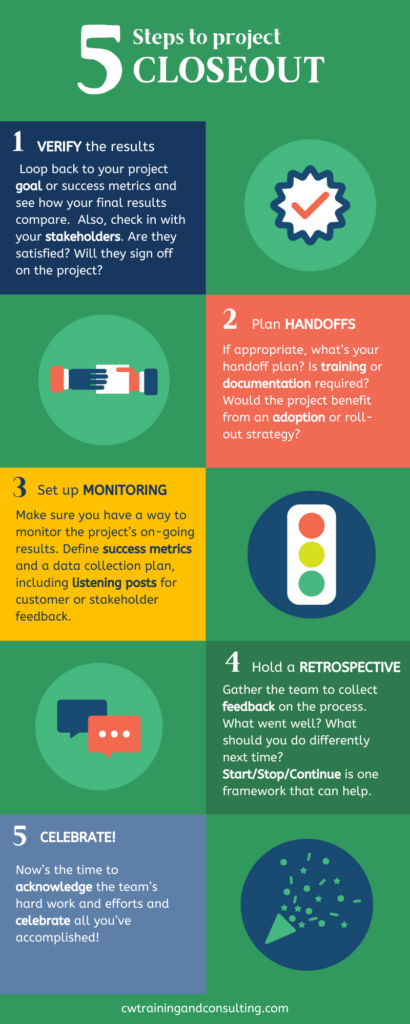
One of the biggest frustrations I’ve experienced as a program manager is seeing my project get canceled. It’s painful to have put thought, time and energy into what I believed was an important initiative for the company, only to have it be deprioritized, defunded, and scrapped. Has this ever happened to you? And how can you protect your projects from project cancellation?
Some reasons for project cancellation are out of your control. Maybe the business environment has changed, or a competitor has moved into your domain. Perhaps the project was counting on a technical breakthrough that didn’t pan out or an external partner that couldn’t follow through.
On the other hand, some of the power is in your hands. Are you running the project effectively? For example, are the goals and vision of the project clear? Do you publish and meet most of your milestones? Listen effectively to your project team and keep your stakeholders up to date with progress and challenges? Manage risks, scope creep and budget constraints?
If you’ve got a good handle on the project execution, there still may be a risk of project cancellation. This can happen if the project is not aligned well with the overall priorities of the organization or if it’s competing with other projects that are more critical to business success. To determine the risk from this internal misalignment, ask yourself these three questions.
Question 1: How does your project contribute to the strategic direction of your organization?
If there’s a list of prioritized projects, does your project appear on it, or contribute meaningfully to one that does? If you don’t have a clear idea of the strategic priorities of your organization, it’s absolutely worth your time to track it down. It may require a conversation with your manager, or the product or marketing manager in your domain. Understanding how your project contributes, and showing that tie to strategic objectives at every project review and conversation you have with stakeholders, will go a long way toward keeping your project prioritized and funded.
Question 2: What level of commitment do you have from managers of needed resources?
I once worked on a project that had a strong strategic tie to the company’s objectives of saving money in server hosting. However, no matter what I did, I couldn’t get the manager of a critical team to provide the people resources I needed to execute the project. The project soon fell apart, because no matter how strategic the work was, it could not succeed without the properly skilled people working on it. Without buy-in from the people who control your resources, your project is at risk. Get that buy-in, or raise the issue with your sponsor promptly. (You can read more about this project failure and what I learned from it in this blog article.)
Question 3: What do your stakeholders think about your project?
Declining stakeholder support is a key risk factor. Your project sponsor may still be on board with your project, but everyone else may have started to doubt the business case, or the technical foundations, or just have moved on to the next business challenge. Keep your stakeholders informed, showcase successes, highlight that strong strategic alignment, and if you notice waning interest, ask about it. Enlist your sponsor in helping uncover the reasons for the declining support. It’s better to cancel the project quickly if the project is doomed than let it drag on wasting your team members’ time, energy and enthusiasm.
Project cancellations happen. Sometimes it’s the right thing, even if it’s painful. Ask yourself these three questions regarding your projects and you’ll have a better sense of the risk of cancellation. You can either shore things up or move decisively to cancel it.
If you enjoyed these tips, sign up for our newsletter and don’t miss a future post or learning event announcement.
CW Training and Consulting specializes in hands-on, interactive project management workshops - either off the shelf or customized to your needs. Contact Us and we will help you find the right learning solution for you and your business.




